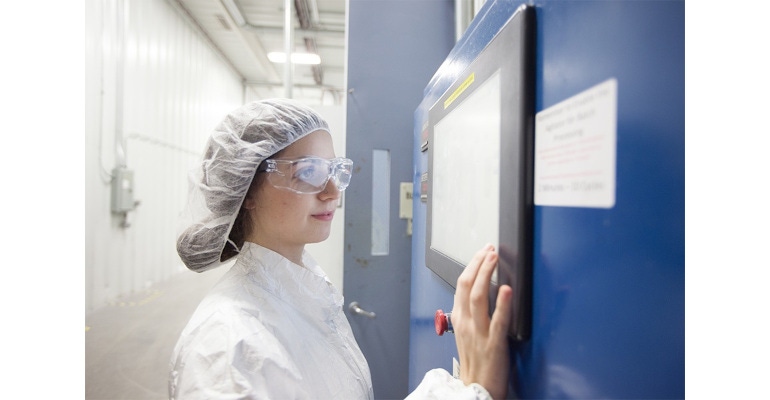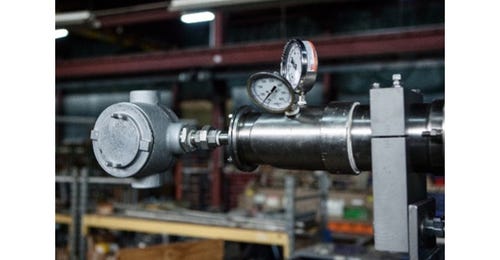PLC-Driven Automation of the Drying Process
The standard vacuum drying process is plagued by inefficiencies.
August 18, 2021

Gregg Muench, vice president, sales and marketing, GEMCO
The standard vacuum drying process is plagued by inefficiencies. By utilizing vacuum dryers with programmable logic controllers (PLCs), previously manual processes can be automated with the addition of temperature control units (TCUs), sensors, solvent recovery systems, and artificial intelligence (AI).
Why Automation is Key to the Drying Process
Two of the biggest challenges in the drying process are long process times and operator presence. In the absence of a one-size-fits-all process, drying typically requires constant monitoring by operators who then make manual adjustments until the product is at its optimal dryness. The drying cycle is broken up into phases with each one requiring some adjustment or pause by the operator as readings are collected to monitor where the product is in the cycle.
It’s common for operators to be uncertain about how wet a product is when it goes into the dryer, or how long drying will take, which is another issue that challenges the process’s efficiency. Installing a sampling port is certainly a viable workaround for how to sample without added delay or risk, but it’s the number of readings that are taken throughout the drying cycle that ultimately fuels the time-intensive monitoring. It’s also the pain point automation seeks to address: cutting out the need for manual monitoring, data collection, and data application/input.
Creating an automated vacuum drying process necessitates a few key components, with each playing a crucial role in optimizing the process for automation, and are as follows.
PLC-Driven Vacuum Dryer
Throwing a PLC into the mix gives the advantage of digitally monitoring every aspect of the drying process, simultaneously and second-by-second. In manual vacuum drying, those readings take longer to collect and impact the drying cycle since operators need to prioritize what they monitor and when.
Using a PLC opens the way for programming algorithms, which in turn introduces machine learning into the process. This allows AI to collect readings from that wide range of data points and components quickly, and then apply what the sensors have picked up by triggering automatic adjustments to the drying cycle via TCUs.
Identifying the different phases of the drying cycle has always been a time-intensive operation with comparable demands of the operator in terms of manual tasks like monitoring the readings, pausing to take batch samples, etc.
As the PLC-driven machine samples real-time data, the PLC also responds in real time to the changes happening both within the dryer and to the product. Not only does that make the process more efficient, but the same machine can also save batches from being over dried by alerting the operator or shutting itself off in the event that the temperature rises above a certain point. That same responsiveness also impacts the efficiency and use of solvent recovery systems.
Programmed correctly, a PLC uses the sensors to automatically read and record different product and vessel states, which the algorithm turns into trends. Once the programming has achieved a baseline, it can auto-tune itself to automatically adjust settings on behalf of the operator for future batches.
Sensors & Temperature Control Units
Sensors read vessel and product states like temperature and vacuum pressure, and feed the information to a corresponding gauge or control panel. In a PLC-driven system, that data is digitized and logged by the computer. To put it in perspective, vacuum dryer sensors can be used to assess:
Product Temperature
Pressure in Machine
Vapor Pressure and Temperature
Sensor placement is another consideration that often gets overlooked. Where a sensor fits may not be the best position for it to pull accurate second-to-second readings—what the AI would rely on to chart and trend its data.
PLC-driven machines can work in concert with digital temperature control units (TCUs) to provide optimal temperature control. A PLC-driven machine is able to adjust the temperature within milliseconds, throttling the TCU between heating and cooling to achieve the precise specified temperature. The PLC and TCU can also work together to adjust the temperature based on the temperature of the product itself, in addition to performing time-based heating.


Exterior and imbedded temperature, pressure monitors, and gauges integrated with PLCs help ensure operation and end-product optimization.
It's also possible to perform gentle ramping, wherein the temperature is increased by certain intervals with the PLC making adjustments to the ramping process as needed (e.g. by 10 degrees every hour). The PLC can help the TCU auto-tune, figuring out how quickly the energy level can be increased without affecting accuracy. Lastly, the PLC can also direct the chillers to drop the temperature quickly in the event of a runaway temperature increase.
Solvent Recovery Systems
Solvent recovery systems (SRSs) collect the solvents that are lifted off the product being dried and collect them. Liquid-ringed vacuum pumps are used to augment this process. As with other aspects of the drying process, the PLC can help with solvent recovery. The PLC can monitor the liquid rings and vacuum pumps to ensure solvents aren't being inadvertently returned to the water stream or being discharged.
Solvent recovery system
The PLC can monitor the condenser temperatures, the chiller temperatures, and the heat exchanger, in addition to maintaining desired vacuum levels and optimize the efficiency of the process of condensing vapors. PLCs make it possible for a machine to autotune-up—that is, it will self-tune to maintain accuracy.
Finally, the PLC can also monitor pump operation for signs of a problem that could require maintenance, including potential leaks. It is possible to see changes in the temperature of the pump as it's running; if the temperature increases over time, it can be determined that the heat exchanger is being impacted somehow, and corrective action can be taken.
Conclusion
The vacuum drying process can be automated when the unit’s PLC, sensors, and solvent recovery systems are driven by AI—program algorithms that chart and trend each phase of the drying cycle to pinpoint the precise moment a batch finishes. The ease of use for operators--like being able to remotely monitor or control dryers--allows processes to resolve without requiring someone to be onsite at all times. That reduces operating costs and time spent on manual tasks, freeing up operators to facilitate other parts of the operation without having to worry about whether they’ve missed a key reading in the drying cycle, etc.
If your goal is to decrease overall inefficiencies in your drying process, automating the process through a PLC-driven vacuum dryer is not only viable for new units, but potentially as retrofits for older machines as well. With an effective programming algorithm, the system’s AI steps in to read and analyze the multitude of data points for a streamlined process that saves time and lowers overall operating costs--you simply have to invest in the right digital solutions, i.e., partner with equipment manufacturers who are designing for the operations of tomorrow, as well as today.
Gregg Muench is vice president, sales and marketing, GEMCO. For more information, call 800-654-3626 or visit www.okgemco.com.
You May Also Like


